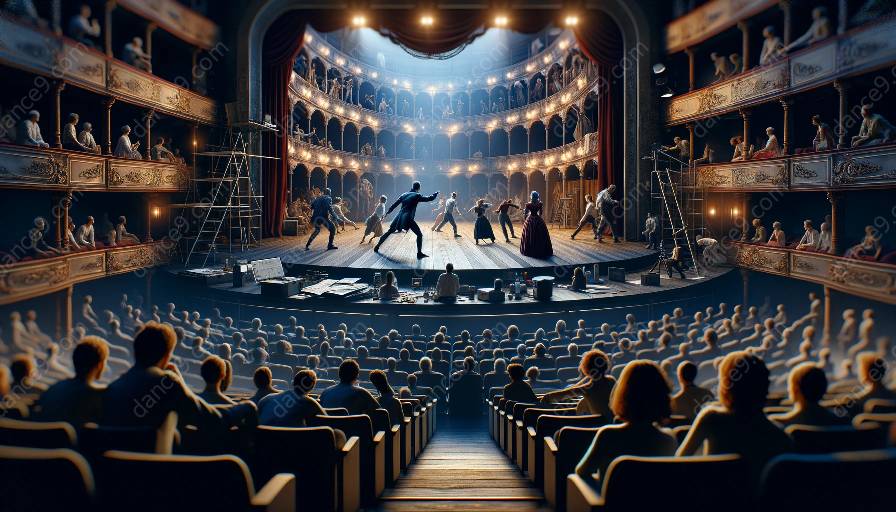Choreographers play a vital role in theatrical productions, contributing to the artistic expression and storytelling through movement. Their work involves a myriad of challenges, including the intricacies of choreography and the complexities of working within the theater environment.
The Role of the Choreographer in Theatre
The choreographer in theatre is responsible for creating and developing dance sequences, movement patterns, and physical expressions that enhance the storytelling and emotional impact of the production. Their role extends beyond creating dance routines; they are integral in shaping the character's physicality and the overall aesthetic of the performance.
Choreography
Choreography is an art form that involves the composition and arrangement of movements, often set to music, to create a cohesive and expressive dance performance. In theatrical productions, choreography is used to convey emotions, illustrate narratives, and establish the mood of the performance. Choreographers meticulously design each movement to synchronize with the music, set, and lighting, ensuring a seamless integration within the production.
Challenges Faced by Choreographers in Theatrical Productions
Working on theatrical productions presents unique challenges for choreographers that require creativity, adaptability, and resilience. These challenges include:
- Creative Vision: Choreographers must align their creative vision with the director and other creative team members while ensuring the choreography complements the overall production. This involves navigating differing artistic perspectives and maintaining the integrity of their artistic vision.
- Collaboration: Choreographers collaborate with actors, dancers, musicians, and technical staff, requiring effective communication and leadership skills. They must navigate various personalities and skill levels to create a cohesive and compelling performance.
- Time Constraints: The limited rehearsal time in theatrical productions places pressure on choreographers to efficiently teach and perfect choreography within strict deadlines, often balancing multiple scenes and dance numbers simultaneously.
- Adaptability: Changes in production elements, such as set design, costumes, or actor abilities, may require choreographers to adapt and modify the choreography to maintain cohesiveness and artistic integrity.
- Technical Limitations: Choreographers must work within the constraints of the theater space, considering the stage dimensions, lighting, and technical capabilities to execute choreography effectively and safely.
- Emotional Connection: Creating choreography that emotionally resonates with the audience and effectively conveys the intended story and character development is a significant challenge that requires a deep understanding of the narrative and character motivations.
Addressing and overcoming these challenges is essential for choreographers to deliver impactful and visually stunning performances that elevate the theatrical experience.






































